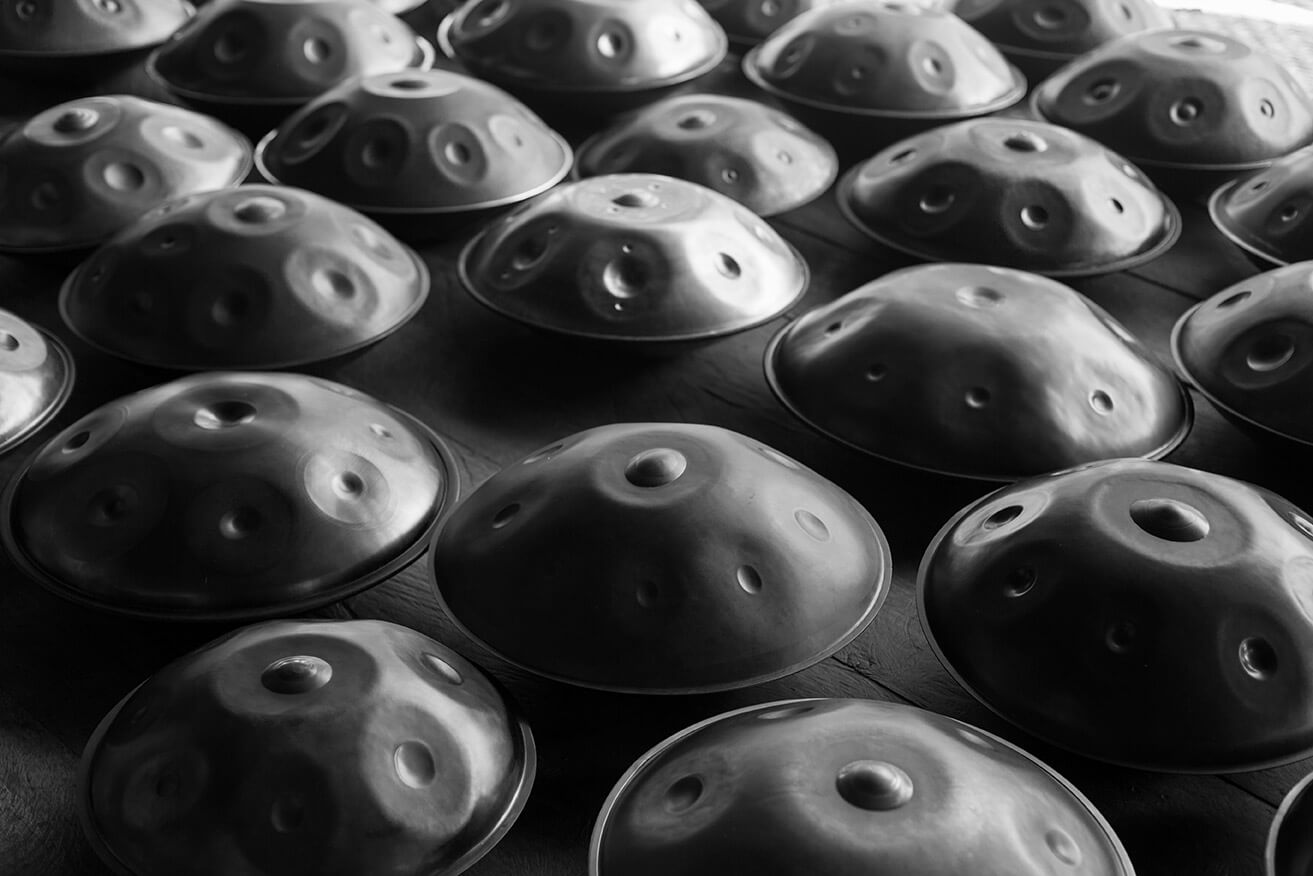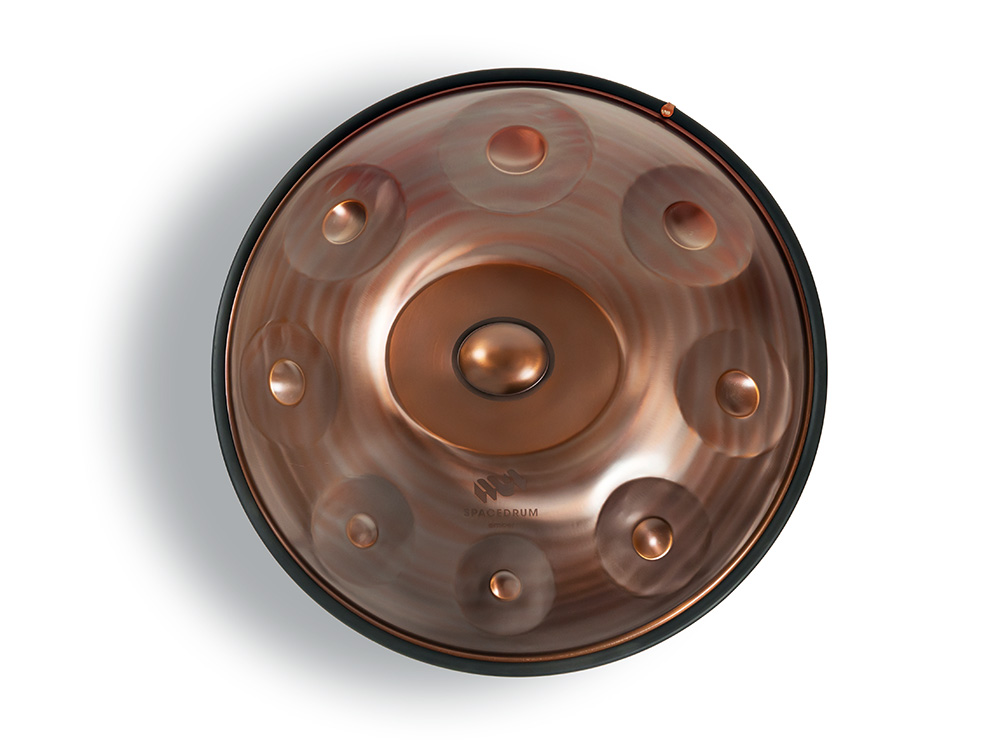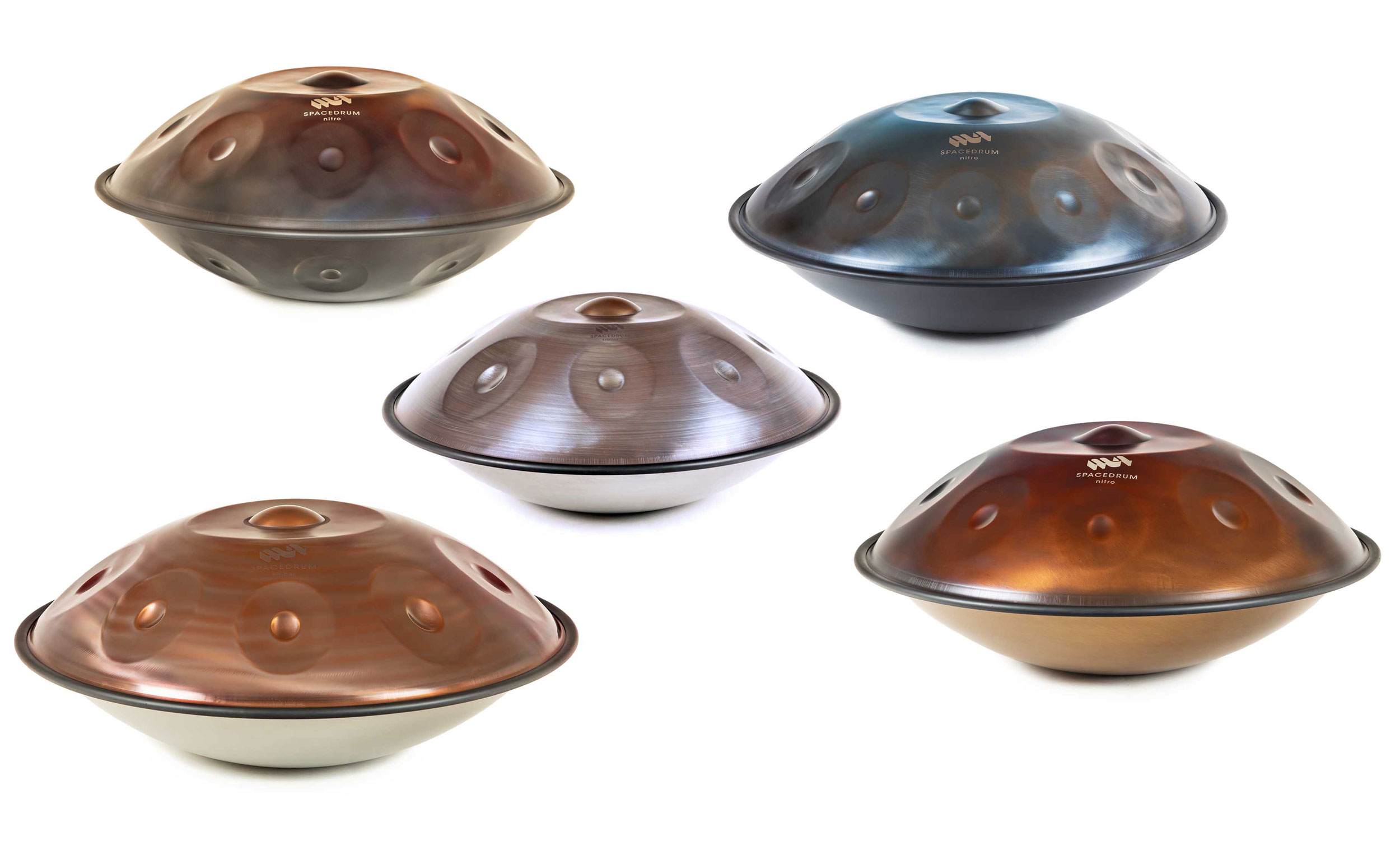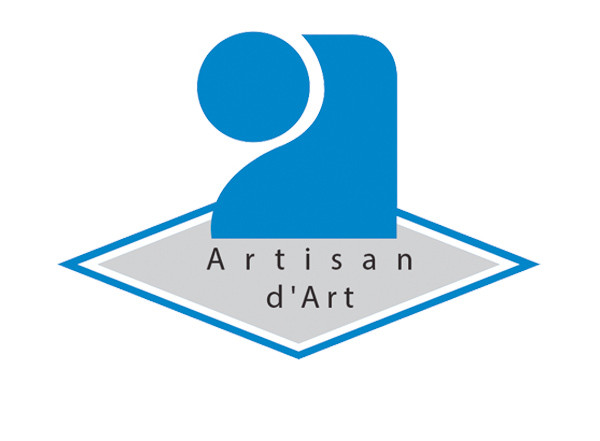How to choose a handpan?
If you are thinking of buying a handpan or even giving one as a gift and you are afraid of making the wrong choice, this article is for you. To choose the right handpan, it is important to take into account several criteria. Indeed, the specificities of this new percussion instrument (as well as those of its market) deserve to be discussed. This article reviews the essential topics to help you avoid the pitfalls and buy your first handpan with peace of mind. A prerequisite in this field - which will probably displease compulsive buyers - if you want to make sure you make the right choice, is to take your time!
Which handpan should you choose to get started?
To begin playing the handpan, you need to start by choosing your first handpan. To do this, it's best to know a few important rules and the main criteria that will help you decide which handpan to buy.
Between the number of notes, the range, the material used to make the handpan which largely defines the sound of the instrument, the price, the manufacturer's brand, the possibility of retuning the instrument easily... there are many elements to take into account.

A quality handpan, or nothing!
Let's get straight to the point. If you decide to take the plunge and buy a handpan, the question of quality is paramount. How can you imagine paying hundreds or even thousands of euros to play an instrument of mediocre quality, or worse, on a saucepan? If you want to choose a handpan to begin with, or even add a second model to your collection, the aim will always be to avoid bitterly regretting your purchase because of a poor quality instrument!
With that in mind, let's start by looking at how to tell if a handpan is of good quality, and then we'll look at a whole series of criteria that will help you choose the handpan that best suits your needs and your budget.
Listening to handpan music
First of all, if you are not used to listening to handpan music regularly, it is important to develop your listening skills. Before buying a handpan, take the time to watch and listen to several videos (preferably with headphones) on social networks. Immerse yourself in the world of handpans for a while thanks to the many handpan music platforms available. And if possible, go and see artists playing handpan in concert. The more familiar your ear is, the more you can rely on your listening skills and the better you can judge the sound quality of a handpan. You can also visit a music shop and/or attend a handpan workshop to try out the instruments and get a feel for their sound.
The aim is to find out if a handpan sounds good or if it has faults. Some of you have a very good ear and will be able to tell the difference right away, but others will have to familiarise themselves with the sounds of the handpan to be sure of their choice and avoid unpleasant surprises.
So you've understood, the handpan you are going to buy must above all sound right!
Knowing the criteria that make a good handpan
Then, to go further, you need to see if the quality criteria below are respected, as they will reinforce your analysis to help you validate the good quality of a handpan: At the very least, the instrument should have the following parameters
- Have a harmonious scale as a whole
- Balanced notes in terms of power (dynamic range) and resonance (sustain)
- Little crosstalk (interference between notes)
- Well-defined and tuned harmonics
And if you are not yet familiar with these notions or if you think you are having trouble defining these parameters, don't worry, your ears are there to guide you. If they detect a little dissonance or the slightest unpleasant vibration, trust yourself and simply switch to another model.
If, on the other hand, all the elements are present, it's off to a good start, so you can go deeper into your qualitative study...
Gauging the level of finish of a handpan
After the sound, let's quickly talk about the finishing of the instrument because small details sometimes make the difference. An instrument with a perfect finish is often a sign of better quality than one with defects.
If you are in a shop or at a festival and you see several models of handpan you can, for example, pay attention to the surface of the notes, to the presence of significant scratches, to the fact that the instrument has or does not have a profile or that it is identifiable by a serial number, and try to recognise the logo.
But it is sometimes difficult for the uninitiated to identify these subtleties, if not impossible if you are on the internet. Finally, an instrument with a beautiful finish can be badly tuned, or worse, badly built, so beware of the mirages of aesthetics and low prices, especially online.
Identifying the brand and country of origin of a handpan
Another interesting criterion you can rely on is the brand of the handpan and its country of origin. If you live in France we strongly advise you to buy a handpan Made in France, or Made in Europe if the reputation of the manufacturer goes beyond the borders. Ask around on the internet or in music shops and you will see that some manufacturers have a good reputation in terms of product quality and service quality (after-sales service being a very important detail as the handpan is a sensitive instrument that may have to be retuned several times during its use).

Which handpan model to choose?
Depending on whether you are a beginner or an experienced player, whether you have a playful approach or specific requirements for composing your pieces, your choice will probably not be for the same handpan model. It is therefore important to ask yourself "why do I want to buy a handpan? and "in what context do I intend to practice my instrument?
To help you understand this, you will find below a presentation of the existing models:
- Handpans with 8, 9 and 10 notes
Although Panart set a standard based on 7 notes + 1 Ding (8 notes) with the creation of the HANG® in 1999, Felix Rhöner, its founder, has also proposed models with 8 notes + 1 Ding (9 notes) since the beginning of the 2000s. Today, handpans with 8 or 9 notes are the standard models that you will find at all manufacturers. For some years now, some manufacturers have also offered handpans with 9 notes + 1 Ding (10 notes).
These models are perfectly suited for beginners as well as for professional musicians. The arrangement of the notes is classical (alternating) and the playing is simplified.
- Handpans with 11 to 15 notes on the dome
Some manufacturers, such as Metal Sounds with its chromatic model, offer instruments with a different note arrangement depending on the scales played. Some handpans can have 2 Dings, others can have small high notes in the centre, others can have an off-centre Ding to add high notes between the edge of the notes and the Ding... in short, there are many variants depending on the scales requested by the customers or the manufacturers' innovations.
These instruments are already a little more complex to play and are mainly aimed at people with particular desires and/or specific needs.
- Handpans with bottom notes ("Mutant" or "Masterpiece" handpan)
This type of handpan is relatively recent. The advantage of the notes being positioned on the bottom of the instrument is that the musician does not have to move around with several handpans. The musical range of the instrument is wider, the melodic universe de facto wider, which is interesting in many ways. These handpans are therefore mainly played by professional or experienced musicians.
The limit of this type of model is the acoustic constraints with interference and/or coupling between certain notes which are sometimes more pronounced. In reality it is quite rare to have a perfectly balanced Masterpiece handpan! The notes positioned on the bottom also cause playing constraints such as the obligation to turn the instrument while playing or the difficulty to access the notes when the instrument is placed on a stand. In this respect, Metal Sounds has recently launched a stand that is perfectly adapted to handpans with bottom notes.
Finally, the price of these "monsters" is obviously much higher than that of a standard model. You can expect to pay between 2500 and 5000 € depending on the brand. These models are therefore not recommended for beginners and are generally made to measure. Nothing prevents you from investing in a 14-note or 20-note handpan to begin with, but just be aware of the level of technical skill that these handpans require and the amount of money you will have to pay to buy one of these little jewels.
Choosing the scale of your handpan
With a handpan, the principle of harmonized scale allows you to play on a totally intuitive instrument because it is never dissonant! Absolute happiness for anyone who has no notion of music or music theory. Each handpan has its own scale in a key chosen by the manufacturer or by the customer. Among the different modes and tones that exist (or that are available) you will have to choose the scale that you like the most, the one that makes you vibrate and travel, the one that resonates within you. Why do you want to do this? Well, simply because you won't be able to change the scale, unless you change your handpan!
There are many scales and they have different "colours" depending on whether they are in major or minor mode for example. Some handpan scales are common, others are more typical, such as the Hijaz scale (an oriental scale often found in the handpan) or the Akebono scale (a Japanese-sounding scale). Take the time to listen to the ranges offered by the manufacturers or available in the shops to make your choice. Choosing a handpan too hastily, even if it is of good quality, means taking the risk of getting bored, of finding that the range no longer appeals to you after a few weeks. If you have any doubts about choosing a handpan range, let your ears do the talking and listen to your heart, or contact us and we will try to guide you.
And if you want to change range once you own your handpan, you can always sell it and buy another one. Many handpan players use the second hand market when they want to discover other ranges (note that the quality of the handpan and its origin are very important elements on the second hand market).
The feel of a handpan
Obviously to get an idea of the feel you need to be able to put your hands on a handpan. The physical contact with the percussion is also a criterion to determine if the instrument really suits you.
Handpans are made of different types of steel and the nuances of the materials used, as well as the heat treatments, will give the player different sensations of playing. Stainless steel or nitrided steel, raw or oiled surface, variable thickness of the sheet metal, all these elements will make you appreciate one handpan more than another. Rubbing, caressing, hitting the handpan in various ways will give you answers as to how it will feel.
The sensations experienced by its touch, the way the instrument "responds" and vibrates when played, are therefore inevitably taken into account when choosing a percussion instrument, even for a beginner.
The aesthetics of my handpan
Just as with touch, the notion of aesthetics is specific to each person. If tastes and colours are not debatable, the beauty of the instrument still plays an important role when you buy a handpan at 2000 euros! Handpans are unique pieces (normally) so their design varies a lot depending on the materials and manufacturers. If aesthetics is not a priority criterion in the choice of a handpan, once the sound quality has been validated, it is better to choose a model that you find to your taste.
The price of a handpan
Should we choose a handpan according to its price?
Today, handpans can be found for sale through different channels (on the internet, in shops, at festivals, from manufacturers) and the price varies between 300 and 3000 euros. So how can you find your way around when you don't know much about handpans and how to avoid scams?
Selecting a handpan by price
A new "quality" handpan with 8, 9 or 10 notes costs between €1000 and €2500 depending on the model and brand. It is important to specify that the notion of quality applies to a whole series of criteria which will make the price vary within this range. A €1000 handpan will naturally be of lower quality than a €2000 model. If you are thinking of buying a handpan below this price, we invite you to study the product description and the seller's references carefully, or to wait a little and save money to invest in a reliable instrument. You can also consider buying a second-hand instrument, but with the risks that this implies.
For "mutant" or "masterpiece" handpans (handpans with many notes, positioned above and/or below) the prices increase, depending on the manufacturer, between 100 and 200 euros per additional note.
For example, at Metal Sounds
A 9-note Spacedrum Nitro handpan costs 1885 euros (with a reinforced case).
A 14-note Spacedrum Nitro handpan costs 2585 euros (with an Evatek semi-hard case).
So yes, price can be an interesting marker, especially to identify poor quality products as we will see below. On the other hand, beware, some brands offer high prices for average quality handhelds. It's up to you to be vigilant, to get information and above all to make sure of the guarantees and the quality of the after-sales service offered by the seller in case you are not satisfied.
How to identify handpan scams?
Some very attractive offers should immediately catch your attention. Marketplaces are offering handpans at bargain prices of around 400-500 euros. Beware - as they are usually made in Asia - these handpans are of really poor quality and often no after-sales service is offered, unless you pay more than the price of the handpan itself, the cost of transporting the instrument to and from the factory! An economic and ecological aberration...
Be aware that if you want to save 1000 euros to buy a handpan in 24 hours, and thus satisfy your desire to buy a handpan, you run the risk of losing your money, because you won't be able to do anything good with your handpan (nor make it sound good, nor even sell it: French manufacturers generally refuse to re-tune poorly designed handpans).
But beware, if it is easy to identify "pots and pans" at 500 euros on the Marketplace thanks to the very low prices that are displayed, the situation becomes more complicated with other websites such as https://handpan-france.com/ or https://mon-handpan.fr/ or https://zenapan.com/. These sites have analysed the market well and are positioning themselves on intermediate prices in order to be less noticed. They pretend to be "French" merchant sites but are in fact real parasite shop windows that rip off Internet users with instruments that have no reference. Indeed, under the cover of superb designs and reduced prices around 900 - 1200 euros, the quality of the instruments, too often leaves something to be desired and the customer service seems to be totally non-existent! You will find many testimonies on the networks attesting to these scams, so be vigilant and when in doubt always contact a handpan manufacturer who normally knows these issues very well.
NOTE: Be sure to read the terms and conditions of sale and the return and refund policies. But above all, ALWAYS check that the site displays the company's legal notices and that these specify the postal address AND the company's SIRET number. IF NOT => GO THE OTHER WAY!
In conclusion, avoid any impulse purchase on an unidentified site and take the time to choose your handpan carefully. Go for 9-note models to start with, sold between 1500 and 2000 euros by recognised professionals who offer a good after-sales service. If you don't have the money, see if you can pay in instalments or save up and paten rather than buying a low-end instrument. The second-hand option can sometimes pay off, but again, be careful.
Try out as many handpan models as you can in shops or at festivals and make up your own mind. And keep in mind that quality is a central point in the choice of a handpan, as the instrument suffers very quickly (and you with it) from lack of quality.
Did you like this article? Would you like to receive more information about the handpan? Subscribe to our NEWSLETTER below!




